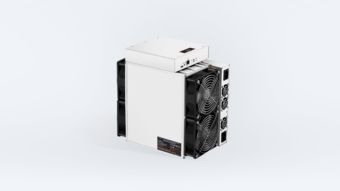Brazil’s burgeoning landscape of Bitcoin mining has begun to draw global attention, as enthusiasts and businesses alike scramble to leverage the country’s unique advantages. With an abundance of renewable energy sources like hydroelectric power and an ever-increasing cryptocurrency adoption rate, Brazil stands at the precipice of a mining revolution. However, as any seasoned miner will tell you, opportunities come bundled with challenges. This article explores the intricate fabric of Bitcoin mining in Brazil, emphasizing its prospects and pitfalls.

The allure of Bitcoin mining is undeniable. The promise of financial independence and the thrill of being part of a decentralized revolution captivates many. For miners in Brazil, the most significant lure lies in the country’s energy resources. With an energy matrix that is predominantly renewable, Brazilian miners can significantly reduce their operational costs. This not only enhances profitability but also aligns with a growing trend among environmentally conscious investors. Lower costs mean higher margins, positioning Brazil as an attractive hub for crypto enthusiasts and miners alike.

As mining machines whir to life in state-of-the-art mining farms, Brazil’s infrastructure supports this growth. Cities like São Paulo and Belo Horizonte have seen a surge in data centers catering to the hosting of mining machines. Hosting services allow miners to operate their rigs without the hassle of maintaining power and cooling systems, but these services also come with their unique set of challenges. High competition can drive down margins, and miners must ensure their machines are optimally configured for the highest output.
One of the most formidable challenges miners face revolves around the legal landscape. Regulatory frameworks concerning cryptocurrency are still murky in Brazil, and as each month passes, the laws seem to change. Miners must navigate this shifting terrain, ensuring compliance with current regulations while lobbying for clearer guidelines. While the notion of burgeoning regulations could stymie the industry’s growth, advocacy for legal clarity can turn it into an opportunity for sustainable advancement.

Diversity is essential in the world of cryptocurrencies beyond just Bitcoin. Ethereum and Dogecoin, for instance, have their place in the mining ecosystem. Ethereum’s transition to proof-of-stake presents miners with a dilemma. The question remains: Adapt to new technologies or pivot to other coins? Dogecoin, with its whimsical charm, has built a robust following, providing another avenue for profits in the mining landscape. This illustrates the unpredictable nature of cryptocurrency; success hinges on flexibility and adaptation.
The rise of sophisticated mining rigs has been a game changer. These machines, equipped with algorithms optimized for efficiency, can outperform their predecessors by substantial margins. The investment required for such technology can be daunting, yet the long-term gains often outweigh the initial costs. Miners who embrace innovation will likely find themselves leading the pack rather than struggling in the trenches of outdated technology.

Moreover, the advent of trading exchanges further enriches the Brazilian mining backdrop. Local and international exchanges provide platforms for miners to convert Bitcoin and other cryptocurrencies into fiat currencies easily. These platforms add liquidity to the market, allowing miners to monetize their efforts promptly. However, miners must employ strategic trading practices, as volatility in crypto prices can be both a boon and a bane.
As Brazil dives deeper into the world of digital assets, the synergy of mining operations, hosting services, innovative technology, and trading platforms will inevitably shape the future of cryptocurrency within the nation. Enthusiasts and industry players must remain proactive in addressing challenges while seizing growth opportunities. Those who dare to adapt and evolve with this rapidly changing environment will find ample rewards waiting at the end of this digital gold rush.


















